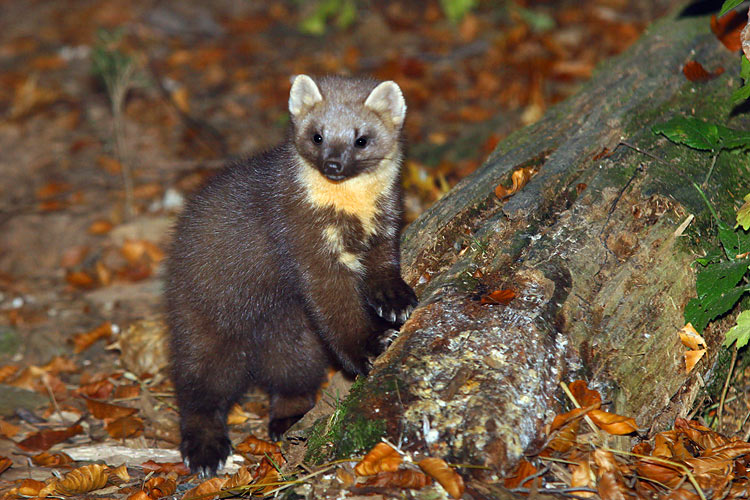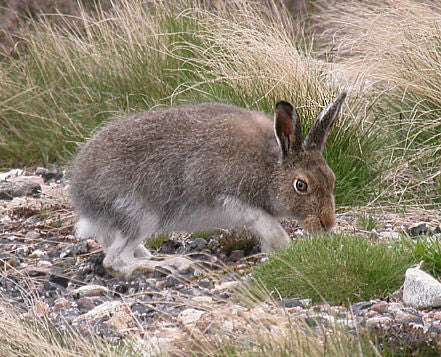
A Guide To British Fauna - Pine Marten
Scientific Name : Martes martes
Common Names : Pineten, Baum Marten, Sweet Marten, European Pine Marten
Physical appearance : The Pine Marten can grow up to 53 cm in body length with an additional 25 cm long, bushy tail. The male Pine Marten is generally larger than the female and weighs in at around 1.5 kg. They have brown fur which grows longer and more lustrous during the winter months. The Pine Marten has a distinctive light brown to cream coloured "bib" of fur on their throats. A member of the mustelid family along with stoat, mink, otters, badgers, wolverines, weasels, and skunks.
Where to find/natural habitat : It is estimated that the Pine Marten arrived in England approximately 10500BC. The Pine Marten is a natural inhabitant of woodlands and forests, particularly densely wooded areas. Pine Martens usually make their own dens in scrubland or in natural tree hollows.
Habits and charecteristics : Pine Martens are the only mustelids with semiretractable claws meaning they are able to lead a more arboreal lifestyle however, they are equally quick on the ground and fast runners. They are more active at night and dusk and largely can be considered nocturnal. Physical adaptations such as highly sensitive hearing and sharp teeth means they are perfectly adapted for eating and hunting small mammals such as squirrel and mouse. Additionally, they will consume a wide range of food including : birds, insects, frogs, carrion, eggs, nuts and even honey. Depending on availability of resources, a Pine Marten may have a territory of up to 25km3, which it marks out with scat (feaces). The Pine Marten is a solitary animal, preferring its own company.
Predation: The Pine Marten has two main predators in the UK, the Red Fox and the Golden Eagle. The Red Fox may eliminate a Pine Marten to minimise competition for resources in the area, or may eat it. Sadly however, the main concern for Pine Marten is human activity and most importantly, deforestation caused by humans. In simple terms, a massive erosion in natural habitat has led to a drastic decline in populations, almost bordering (at one stage) on extinction.

Photo:Dani Kropivnik, CC BY-SA 3.0 <https://creativecommons.org/licenses/by-sa/3.0>, via Wikimedia Commons
Fortunately, due to an attempt at preservation and several breeding and release programs, the UK population of Pine Marten has been stabilised and is now in recovery. Up until twenty years ago, the Pine Marten was practically extinct south of the Scottish borders but now they have been spotted as far south as Yorkshire.
A natural ally to the Red Squirrel: As the Pine Marten spends a lot of time on the ground, they frequently run into grey squirrels which they prey upon. The Red Squirrel however, spends more of its time in the trees therefore crosses paths less frequently with the Pine Marten. There is a noticeable increase in Red Squirrel populations when Pine Marten is introduced into the area. In the UK, the Grey Squirrel is considered invasive and therefore a pest.
Edibility : Although technically edible, the meat is not sought after or desirable, particularly. The Pine Marten is a protected species in the UK, under the Wildlife and Countryside Act 1981, making trapping, hunting and killing Pine Martens, illegal! In the 18th and 19th centuries, Marten fur was highly desirable for its warmth and soft texture, this being one of the reasons for the Marten's near extinction. Just to reiterate, trapping, hunting and destroying a Pine Martens den is illegal!
"Leave nothing but footprints, take nothing but pictures/memories.
The Bushgear Team

